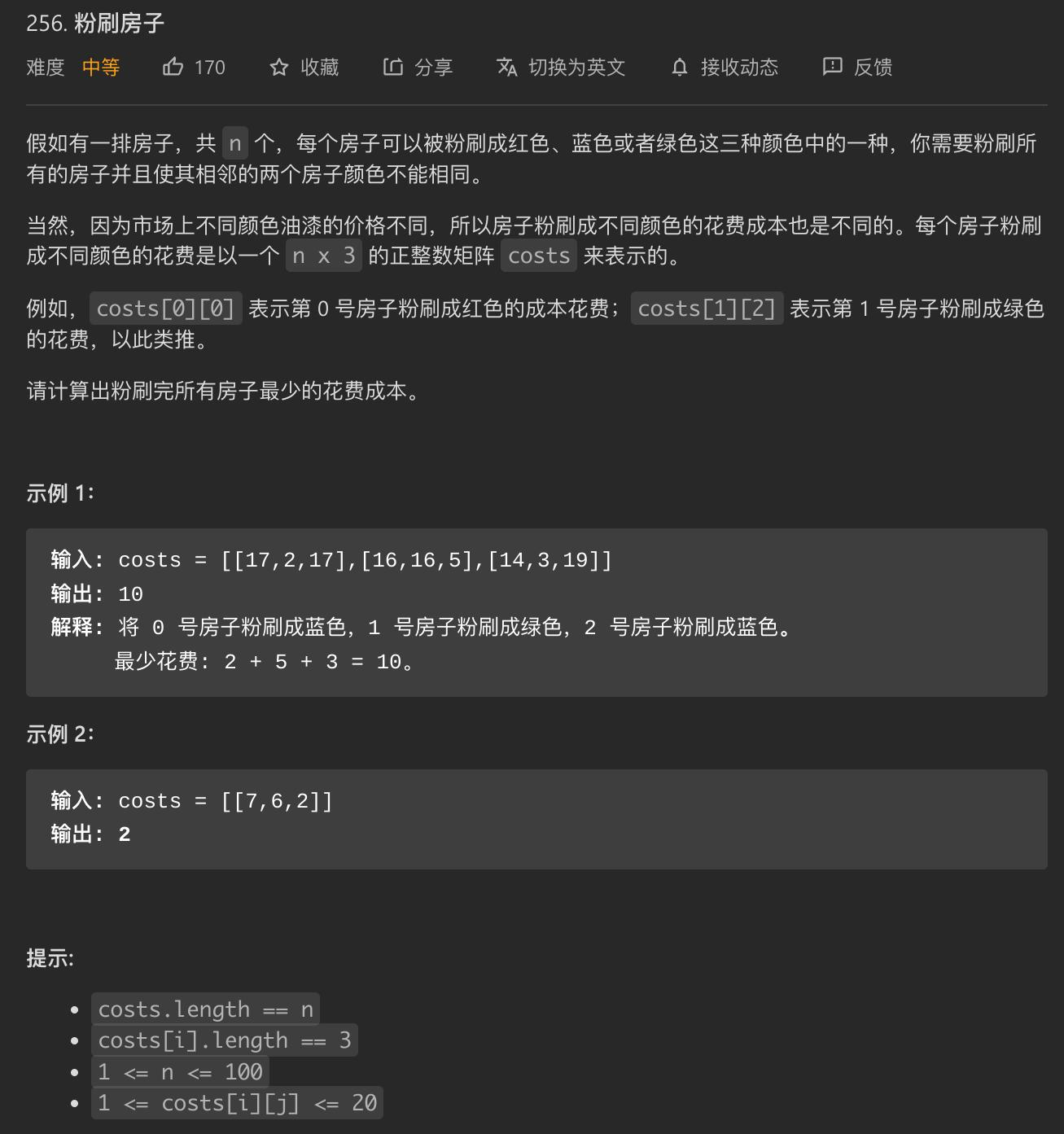题目

思路
- 不需要考虑从开始位置到当前位置的最小花销,状态难以确定。因为当前位置会影响下一个位置,就算当前位置取到了最优,那么如果综合了下一个位置去考虑,可能当前的选择就不是最优了。比如说,当前选了红色,发现开销最小,但是下一个位置可能也是红色,如果无法选取,那么整体来讲当前位置选红色并不是最好的。
- 如果当前位置确定了颜色,那么上一个位置的颜色一定也会被确定(不重复 + 开销小),顺序递推下去,就可以确定整体的序列。
to_red表示[0, i - 1]序列当中,最后一个颜色选择红色,序列的整体最小开销。- 当前颜色选择绿色的最小开销为
costs[0][1] + min(to_red, to_blue) - 关键在于确定状态转移方程的唯一性,不要出现前后干扰等情况。
代码
class Solution {public: int minCost(vector<vector<int>>& costs) { int to_red = costs[0][0], to_blue = costs[0][1], to_green = costs[0][2]; int n = costs.size(); for (int i = 1; i < n; ++i) { int nxt_to_red = costs[i][0] + min(to_blue, to_green); int nxt_to_blue = costs[i][1] + min(to_red, to_green); int nxt_to_green = costs[i][2] + min(to_red, to_blue); to_red = nxt_to_red; to_blue = nxt_to_blue; to_green = nxt_to_green; } return min(to_red, min(to_blue, to_green)); }};


